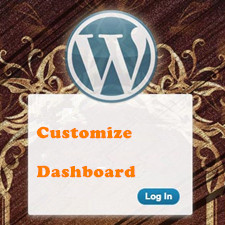
WordPress is a great tool for content management and creation. It has an intuitive publishing interface containing Text Editor and Visual Editor. In this post, we are mainly focusing on the latter one. In fact, the WordPress Visual Editor is a WYSIWYG (What You See is What You Get) editor. That means what you see after editing is what you will see on the website later on. To be frank, this is pretty user-friendly for newbies when it comes to post publishing.
To help you know this excellent WordPress feature, we have come out a comprehensive guide that explains the tips and tricks for mastering the functions in WordPress Visual Editor.
Kitchen Sink
The Visual Editor shows only one row of icons by default. At the end of the row is the “Toolbar Toggle” icon. Once you click on it, the Visual Editor will display another row of buttons for more functions.

This will present you with all the things you need to format the text. You can learn the function of a button by hovering your mouse pointer over it, and a tool usage tip will pop up automatically.
Manage Links
Now, you need to know about the adding and removal of hyperlinks for the content. If you would like to add the hyperlink, you can select the text and click the button of “Insert/ edit link”.

After clicking the button, you will see a screen like the image showed as below. Here, you need to enter the URL and title of the page you are linking to. In addition, you also need to indicate whether you would like to open a new tab for that link or not by clicking the box. Note that this hyperlink is an outside link.

If you want the hyperlink to be internal, you need to click the “Or link to existing content”. Here, you can link the text to other posts or blog pages within your website. WordPress is smart to populate the recent title and URL for you. Please note that if you have many pages or posts and want to link to a specific one, WordPress might spend some times to search the content.
Insert Tags
Sometimes you will find that your posts have been shown into various parts for your website, including archives and home page. And the showcase includes the post title and a small excerpt. Here, you can request the WordPress system about where the excerpts shall be cut off. Although this is a small feature, it helps many authors because they do not want their post excerpts to be showed in mid-sentence.
Manage Headers
In general, the post format contains certain structure, such as primary header, secondary headers, and even tertiary headers. As it is critical for you to understand how the articles are formatted, WordPress has a great feature for managing this aspect. By default, you can choose from the standard paragraph text and pre-formatted text. If you need, you can also select an appropriate header from the drop-down box in the image showed as below.

Insert Special Characters
In a blog post, you also need to insert special characters, such as typical symbols and numbers. This feature is similar to the one in the Word Processor. To add the special characters, you need to select the button showcased in below.

Now, you can see a number of characters that are included into WordPress by default. At this moment, you can select some that you prefer. Please note, when you select the characters from WordPress Visual Editor, it will tell you the respective NUM and HTML codes for your reference.

Fullscreen Mode
If you would like to focus on the post creation only, you can choose the Toggle Fullscreen button. Then, all the buttons and boxes which are not essential shall disappear, and the toolbar shall be automatically hide. This way, you can in a distraction-free writing mood.

Cut and Paste Text
In fact, it is hard to format the text pasted from other sources into WordPress. In this case, if you are going to cut and paste information from Excel or Word and want the formatting to be original, you can uncheck the button of Paste as Text. However, if you select it, the pasted content will be simple text.

Remove Formatting
WordPress Visual Editor allows you to remove formatting. You will just need to highlight the text whose formatting you do not like and click Remove Formatting. The text will be restored to default as dictated by the theme you choose. This feature may not remove certain formatting like blockquotes and headers.

















